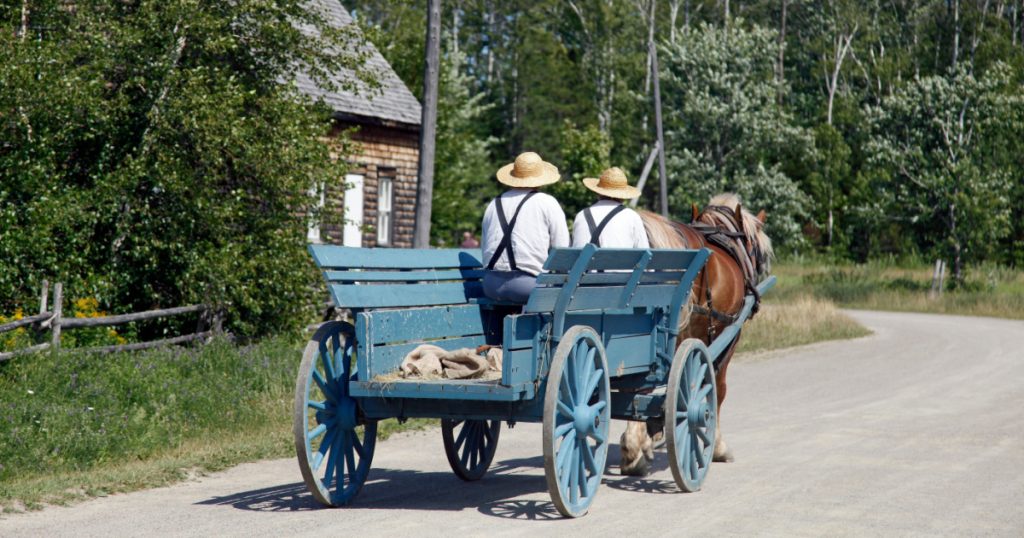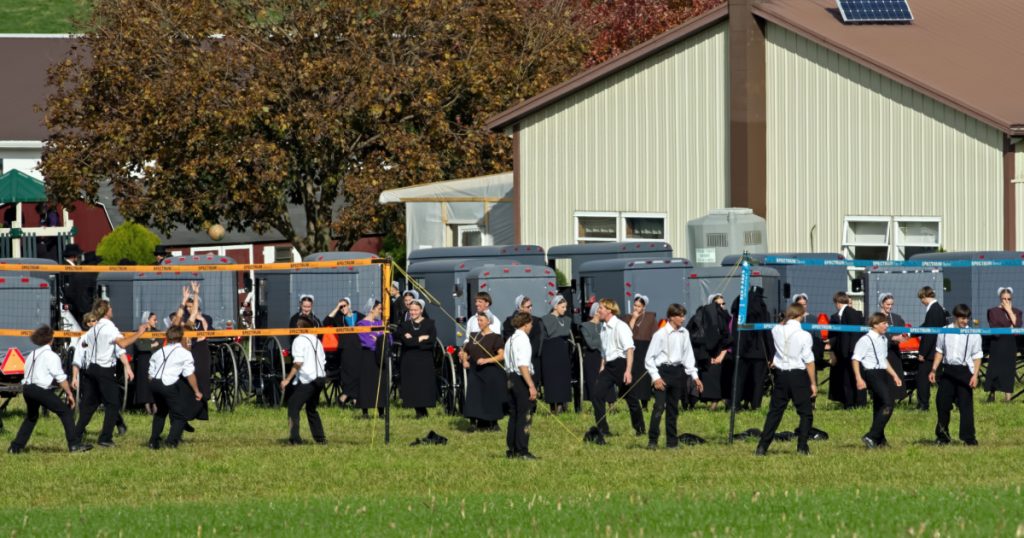The Amish people have been somewhat of a mystery to the rest of society. Their way of life is drastically different from the average American. For instance, an abduction in December of 2022 took place in which two Amish girls from New York were kidnapped. Luckily, the girls returned home safely, but many still had some unanswered questions. In this case, police employ a sketch artist to create an image of one of the girls because of the sect’s prohibition on photos. This isn’t the only peculiar difference either. Here are ten lesser-known facts or misconceptions about them.
1. Parts of the Amish Community

It turns out there are actually four main groups among the Amish people. The Old Order, the New Order, the Beachy Amish, and Amish Mennonites. Furthermore, within these groups are several subgroups.
2. Customs and traditions

Although Amish people follow the rules of their individual communities, a few rules are fairly universal—for example, clothing and hygiene practices. The majority wear plain clothing and, in many groups, are restricted to wearing only black and white. Furthermore, buttons and zippers are prohibited. Instead, they use pins or hooks and eye closures. Furthermore, their attire still very much aligns with the same styles and fabrics of clothing worn by their ancestors and is designed to promote the importance of the Amish people’s desire to remain humble.
Certain hygiene practices, such as men maintaining facial hair, are another examples of some of the universal laws followed by all Amish people, regardless of individual group. Young men are permitted to shave their facial hair until they marry. However, Once married, the men vow to not only stay devoted to their wife but also to maintain a beard for the duration of their life. Additionally, mustaches are prohibited at all ages.
3. Language

As previously mentioned, the Amish people speak German as well as English. However, the Pennsylvania Dutch, or German Low dialect, has been considered “outdated” by many of the younger generations.
Fortunately, because they are also taught American English, they are able to speak with customers and guests of their communities.
4. No Amish Parties

Interestingly, although the Amish highly regard having children, believing them to be the only treasures they can take to heaven, mainstream-style celebrations are frowned upon. Things like gender reveal parties or baby showers aren’t celebrated in the Amish communities. Furthermore, traditional religious practices such as baptism aren’t performed on children or infants because they believe in allowing their children to decide which religion they will follow.
5. Rumspringa

Needless to say, every family hopes their children will choose to come home and live out their days involved in their communities and traditions. However, they’re so open to their children making their own paths that they permit teens to embark on an adventure called Rumspringa. Although many people have heard the term, few actually understand what it means.
Rumspringa is a “rite of passage” for all Amish people, in which they’re given the freedom to leave their community and explore what the world has to offer. They even have Rumspringa youth groups in which those exploring the outside world can still come together with peers from their community to play games and partake in other social activities.
6. Taxes are Inevitable

Its generally believed that the Amish reject modern-day technologies. However, within the past century, the Amish have become more involved in opening businesses, purchasing vehicles, and other aspects of daily life amongst the general population. Many of their businesses include carpentry or farming, selling handmade goods to the general public.
As such, they are required to pay taxes. This includes income, property, and so on. However, the Amish people do not receive or pay into social security because they believe the church should care for its elderly members.
7. Military and Rules of the Law

Additionally, they are exempt from participating in Military Service as their culture highlights “non-resistance,” their preferred term for “pacifism.” This ties into law enforcement; the Amish people have their own laws to follow and law enforcement system. They follow the rules of a book called the Ordnung. In this book are all of the guidelines and consequences of not following said guidelines. Everything is written in detail and concisely in order to avoid any confusion regarding the rules of conduct.
8. The Amish are Divided Regarding Technology

Fascinatingly, each individual community makes its own rules regarding the use of technology. Therefore, some communities do allow the use of electricity and other technological innovations. In contrast, many do fit the stereotype and prohibit their community from using vehicles, electricity, televisions, computers, or electronic equipment typically used in mainstream farming. Alternatively, they are permitted to hire an “English” driver, someone who lives outside the Amish community, to chauffeur them around. Some communities have even adapted to the use of refrigerators to keep their food fresher for longer.
Contrary to popular belief, the Amish people don’t believe technology is evil. However, they do feel it has the power to bring about evilness. At the foundation of their culture is tradition, and therefore, they often shy away from mainstream life. For example, many fear that the integration of vehicles will eliminate their traditional horse and buggy method of travel.
9. Photography is Prohibited in Amish Communities

They have also banned the use of photography “to avoid cultivating personal vanity.” As such, many of the images seen depicting the Amish people are actually hand-drawn or painted, just the like the story of the abducted girl. They also do not attend college.
10. Education is at Their Discretion

Most Amish people attend school until the end of 8th grade, with about 10% of the population attending public schools. Meanwhile, most attend private schools that teach English and their native German dialects. In many parts of the US, children must attend school until they are 18 years old or have graduated high school. Alternatively, in 1972, the Supreme Court ruled in favor of Amish people being allowed to end school at the age of 14.
Although a handful integrate into society, with some following a darker road, such as the use of narcotics, many actually strive to return home to be with their families.
Society has gained a greater understanding of the mysterious culture thanks to some places allowing guests to come to share a meal, buy a handmade quilt, or tour their farms. Regardless, it’s clear the Amish people are deep-seated in their roots and seemingly strive for a humble and wholesome existence.